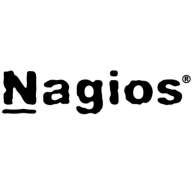

IDERA Uptime Infrastructure Monitor and Nagios Core offer infrastructure monitoring solutions. While IDERA is appreciated for its user-friendly nature, Nagios Core is often seen as superior due to its extensive features.
Features: IDERA Uptime Infrastructure Monitor provides visual dashboards, performance monitoring, and predictive analysis tools. Nagios Core offers flexible plug-in architecture, strong network monitoring, and comprehensive monitoring range.
Room for Improvement: IDERA could enhance its customization options, expand its open-source integration support, and improve its network monitoring capabilities. Nagios Core can work on simplifying its complex setup, enhancing its user interface, and developing its official support services.
Ease of Deployment and Customer Service: IDERA Uptime Infrastructure Monitor is known for straightforward deployment and robust support services. Nagios Core, on the other hand, requires more technical expertise and offers community-driven support.
Pricing and ROI: IDERA Uptime Infrastructure Monitor generally has higher upfront costs but promises good ROI with its comprehensive offerings. Nagios Core, being open-source, is a cost-effective choice for organizations with skilled technical teams ready to handle its complexities.


Uptime Infrastructure Monitor helps IT administrators to unify performance monitoring and optimization of IT infrastructure. Unlike its competition, it provides monitoring of a broad range of platforms and applications, ability to set service-level agreements, and support of both agent and agentless monitoring.
This is IT infrastructure monitoring's industry-standard, open-source core. Free without professional support services.
We monitor all Network Monitoring Software reviews to prevent fraudulent reviews and keep review quality high. We do not post reviews by company employees or direct competitors. We validate each review for authenticity via cross-reference with LinkedIn, and personal follow-up with the reviewer when necessary.